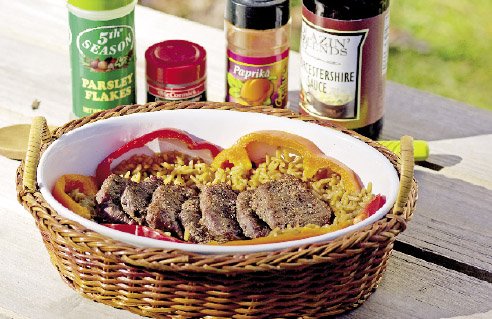ARKANSAS — When I was young, I hunted deer with a group of men who camped in east Arkansas’ wooded river bottoms. I have lots of good memories of those times, including many that revolve around camp traditions. A hunter who shot at and missed a deer, for example, had his shirttail cut off. A young nimrod who killed his first deer would be “blooded” by camp members.
Another tradition involved the first deer killed each season. That deer was a “camp deer.” The animal was skinned; then the hunters removed the choicest cuts of venison — first the two slender, foot-long tenderloins lying along the backbone inside the body cavity, followed by the two thick, boneless loins, or backstraps, on the back between the deer’s hindquarters and the base of its neck. Tradition dictated that these choice cuts of venison be shared with everyone in camp.
The hunter who killed the deer usually cooked it as well because everyone else was still hunting. For this reason, the method of cookery varied considerably. At times, a simple preparation technique was used — little medallions of loin battered and fried in a skillet, for example, or a whole loin cooked on a spit over the campfire with nothing more than a sprinkling of salt and pepper. At other times, the backwoods chef fawned over the meal like a caterer cooking for a soiree, whipping up special rubs or sauces to highlight the mild flavor of the venison or using savory cooking methods such as braising, grilling or flambéing.
Regardless of the cooking method, plain or fancy, the venison loin was always tender and delicious, and it was gone in the blink of an eye. Leftovers were unheard of.
The loins are considered the choicest cuts of venison by all wild-game chefs. The muscles from which the loins are formed lie alongside the spine. They do little work, so they are the most tender part of the deer. They are easy to portion, straightforward to prepare and a breeze to carve. Diners love loin because it’s never tough, always scrumptious and makes every meal seem like a special occasion.
It’s simple to remove the loins when butchering a deer. Start with the tenderloins. These lie adjacent to the spine inside the body cavity and taper on both ends from the back of the ribs to the pelvis. The tenderloins are easily removed with a sharp knife. If you wait until the carcass cools, you actually can pull the tenderloins out carefully with your hands.
The loins, or backstraps, are two parallel cylinders of lean muscle lying tight against the backbone on the outside of the carcass. To remove them, insert a sharp knife (I prefer a flexible fillet knife) straight down beside the backbone where it meets the hindquarters, and, progressing toward the deer’s head, cut tight along the vertebrae, following the contour of the bone all the way to the base of the neck.
Next, make a perpendicular cut across the top of the rib cage that meets the initial cut. This should be 4 to 6 inches from the first and as deep as the rib bones. The long strip of muscle between the cuts is the loin. Grasp the upper end (near the hindquarter) of the loin with one hand and carefully slice around it with the knife, separating the loin from the ribs and backbone as you pull downward. With practice, the loins will come out quickly and easily.
Smaller tenderloins can be kept whole until cooking time. If you freeze them, use a vacuum packer or wrap both pieces in a thick layer of freezer paper and place in a zip-seal bag. Otherwise the cold of the freezer will lessen their quality. A better option is cooking them fresh, not frozen, to make the most of their tenderness and flavor.
While the tenderloins require little trimming, the loins have an outer layer of fat and silverskin (a thin, tough, silvery membrane) that should be removed before the loin is cooked. The loin may be prepared whole, cut in half or thirds, or sliced crosswise into small steaks of a desired thickness. I like to cut mine into inch-thick disks and then butterfly each piece by cutting it about three-quarters of the way through to make it half as thick but wider. These thinner, wider cuts cook more quickly when sautéed in a pan.
About the only way to ruin venison loin is overcooking it. It’s best when cooked rare or medium rare, but if you have finicky guests who insist on having their meat well done, use smaller cuts so they can be cooked to varying degrees of doneness.
There are many recipes that bring out the best in these tender
cuts of delicious venison. Here are a few sure to be a hit with all who try them.
